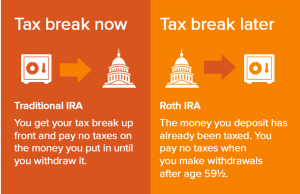
Part IV: Retirement Income and Legacy
Financial PlanningFeb 02, 2022
Parts I, II and III of our Taking Inventory series took you through the process of creating a balance sheet, organizing your assets, and managing the balance sheet to put you in a position to retire. In our final installment, we’ll take you through the distribution of your assets. In sticking with the mountain theme from Part III, the distribution phase begins when you reach the top of the mountain. While you’re enjoying the view, you can’t help but think about making your way back down the mountain. In this case, getting back down is living off your assets for the rest of your life.
The main driver of the distribution phase is your withdrawal rate. The higher your withdrawal rate, the higher the risk of running out of money. Most financial planners will tell you anywhere from 3 to 5% is a manageable withdrawal rate. The “4% rule” has been used by planners for years and basically says that a balanced portfolio will not run out of money no matter how long you live. More aggressive planners think it is too low and more conservative planners think it is too high.
Taxes are a factor in the withdrawal rate and are often overlooked when running calculations. If your main asset is a Traditional 401(k) or IRA, you have to remember that the net amount you want to take home is not the amount used to calculate your withdrawal rate. For example, if you have $1,000,000 in your Traditional IRA, and your tax rate is 20% you should make decisions under the assumption that account will net to closer to $800,000. You need to determine the proper tax rate to withhold and then include the taxes in your withdrawal planning. This is where having a Roth account and/or a brokerage account can be incredibly helpful. Those assets can be utilized to create a withdrawal strategy that minimizes taxes and their effect on your withdrawal rate.
Investment risk needs to be considered when you are determining your withdrawal rate. With life expectancies increasing and interest rates near all-time lows, equity allocations are higher in retirement than ever before. Why? due to the dangers of inflation. It is another risk those thinking about retirement need to consider. This is because inflation will go a long way in determining asset allocation and how much money one will need. If you are so risk averse that you have all your money in cash, then your withdrawal rate will have to be much lower at today’s rates, even though the prices of things we buy will go up. You may want to consider an annuity to provide you with some guaranteed income to manage investment risk and longevity risk. Either way, the expected return from your assets must be considered, and investment risk and inflation are major factors in that discussion.
You thought climbing the mountain was complicated. Getting back down can be just as overwhelming. You have to make a plan and commit to an asset allocation and withdrawal strategy. Just like during the accumulation phase, there will be hurdles. The planning never stops. If you’re fortunate enough to have a very low withdrawal rate, then you may be planning for the next generation. There are plenty of estate planning strategies that include gifting, insurance, and trusts. Please take the time to consult the proper professionals. You put yourself in a great financial position. Make sure you maximize it for you and your family.


